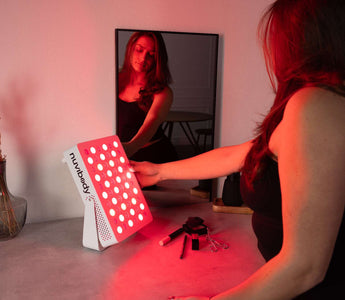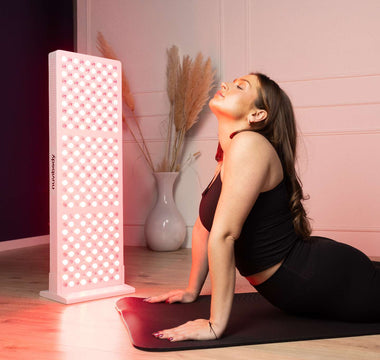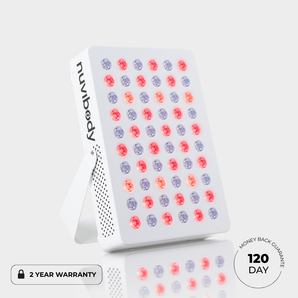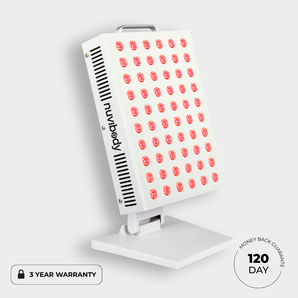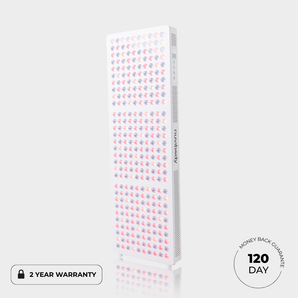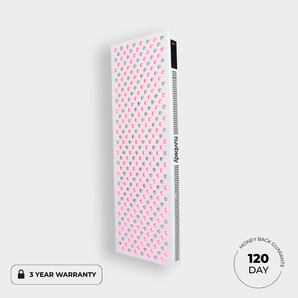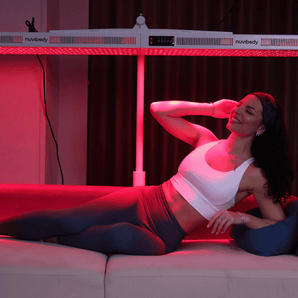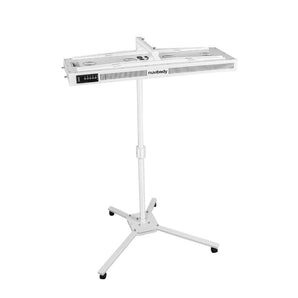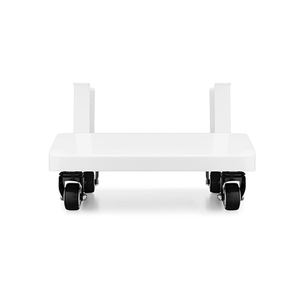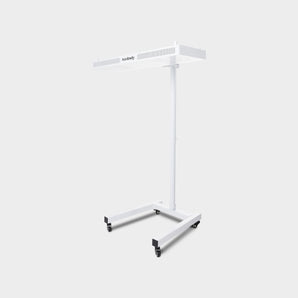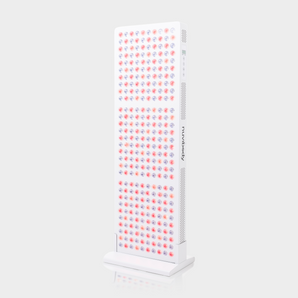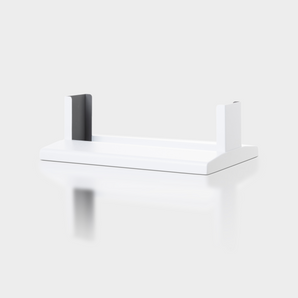Infrared (IR) light therapy has gained increasing attention in recent years for its potential health benefits. Whether you’re looking to relieve muscle pain, improve your skin, or boost your energy levels, infrared light can play an important role. But what exactly are the different types of infrared light – IR-A, IR-B, and IR-C? What do these terms mean, and how do they affect the effectiveness of an infrared light treatment? In this article, we’ll take a closer look at the three categories of infrared light and their applications in light therapy.
What is infrared light?
Infrared light is a part of the electromagnetic spectrum and is just outside the visible light range. It has longer wavelengths than visible light and is therefore not visible to the naked eye. Infrared light is divided into three main types: IR-A, IR-B and IR-C. These types differ in their wavelength and the extent to which they penetrate the skin and tissues.
The three types of infrared light: IR-A, IR-B and IR-C
1. IR-A (Near infrared, 700-1400 nm)
IR-A has the shortest wavelengths of the three infrared types and penetrates the deepest into the skin and underlying tissues. Scientific studies show that near-infrared light (especially between 800 and 1100 nm) is beneficial for cell regeneration, pain relief and inflammation reduction. IR-A is often used in therapies aimed at muscle recovery, joint pain and wound healing.
Devices like Nuvibody's use a spread of wavelengths exclusively within the IR-A spectrum, meaning they focus on deeper tissue treatments without the heating effects of IR-B and IR-C.
2. IR-B (Mid-infrared, 1400-3000 nm)
IR-B penetrates less deeply into the skin and is mainly associated with thermal effects. Contrary to what is sometimes claimed, there are few scientific studies that point to specific skin-improving or wound-healing properties of IR-B. The main effect of IR-B is to promote superficial warming and improved blood circulation, which can be useful in industrial and thermotherapy applications, such as heat lamps.
3. IR-C (Far infrared, 3000 nm - 1 mm)
IR-C has the longest wavelengths and is almost completely absorbed by the upper layers of the skin, generating mostly heat. This makes IR-C ideal for applications such as infrared saunas, where it promotes deep heating of the body without direct therapeutic effects on cells or tissues.
Applications of IR-A, IR-B and IR-C in therapy
The effectiveness of infrared light therapy depends on the type of light used and the specific health goals.
- Pain relief and muscle recovery (IR-A)
IR-A is the most effective type of infrared light for treating muscle and joint pain. It penetrates deep into the tissues and stimulates the mitochondria, leading to increased ATP (cellular energy) production and an accelerated recovery process. Research supports the use of IR-A for chronic pain, arthritis and muscle recovery. - Skin care and wound healing (IR-A, not IR-B)
Although IR-B is sometimes suggested to play a role in wound healing and skin care, most studies point to IR-A as the effective wavelength. Near-infrared light in the 800-900 nm range stimulates collagen production, improves blood circulation, and aids in skin repair, including the treatment of scars and wrinkles. - Heat and relaxation therapy (IR-C)
IR-C is primarily used for heating applications, such as infrared saunas. This type of infrared light aids relaxation, stimulates circulation, and can help with general stress relief, but does not have the deep biological or healing effects of IR-A.

Why is the right choice of infrared light important?
To maximize the benefits of infrared therapy, it is essential to understand which type of infrared light is best suited to your needs. Studies show that IR-A provides the most significant therapeutic effects, while IR-B and IR-C primarily contribute to warming and comfort.
When choosing a home device like Nuvibody, it’s important to know what wavelengths it offers. Nuvibody red light therapy devices operate exclusively within the IR-A spectrum, meaning they’re optimized for therapeutic applications like muscle recovery, inflammation reduction , and skin rejuvenation.
Choose the right infrared technology for your needs
IR-A, IR-B and IR-C each have their own characteristics and applications, but when it comes to scientifically proven therapy for pain relief, skin improvement and muscle recovery, IR-A is the most important wavelength. IR-B and IR-C mainly play a role in heat generation and relaxation.
When choosing an infrared therapy device, it is crucial to pay attention to the wavelengths used. Nuvibody devices use therapeutic IR-A wavelengths, which provides effective and safe light therapy with proven health and wellness benefits.
If you want to experience the benefits of infrared therapy, make sure you choose a device that actually offers the right wavelengths for your health goals.


